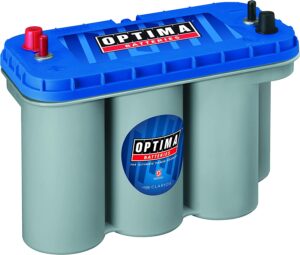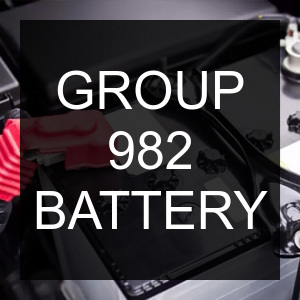You have a few options when looking for the right battery for your car or truck. Group 29 and group 31 batteries are designed for automotive applications. But there are some key differences between them that you need to be aware of before making a purchase. But what exactly are these groups? And how do they compare to each other and options on the market?
Here’s everything you need to know about groups 29 and 31 batteries, including reviews, charging tips, and more.
Why it’s important to compare to choose
The key reasons why you might need to compare battery groups 29 and 31 are:
- You’re not sure which type of battery is right for your needs.
- You want to know the difference between these two types of batteries.
- You’re trying to decide between group 29 and group 31 batteries, and you need more information to make a decision.
No matter your reason for needing to compare these two battery groups, it’s important to have all the facts before making a decision. Keep reading more about the key differences between group 29 and 31 batteries.
What Is a Group 29 Battery?
A group 29 battery is a lead-acid type often used in commercial and industrial applications. That’s because they’re designed to provide high power and long life in demanding conditions.
One of the most notable features of group 29 batteries is their size. They’re larger than most other automotive batteries so that they can provide more power.
Group 29 batteries are also known for their deep discharge capabilities. That means they can be discharged and recharged multiple times without losing performance.
Pros and cons of group 29 batteries
Now that you know more about group 29 batteries, it’s time to decide if they’re the right option for you. Here are some of the pros and cons to consider:
Pros:
- Large size means more power
- Deep discharge capabilities
- Can be charged with a standard automotive battery charger
Cons:
- More expensive than other options
- Requires regular maintenance
Group 31 batteries review
Group 31 batteries are a type of lead-acid battery that’s often used in commercial and industrial applications. That’s because they’re designed to provide high power and long life in demanding conditions.
One of the most notable features of group 31, as with group 29 batteries, is their size. They’re larger than most other automotive batteries so that they can provide more power.
Group 31 batteries are also known for their deep discharge capabilities. That means they can be discharged and recharged multiple times without losing performance.
What Are the Best Group 31 Batteries?
There are a few different groups of 31 batteries on the market, but not all of them are created equal. Here are three of the best options available:
- ODYSSEY 31-PC2150S Heavy Duty Commercial Battery
- Optima Batteries 8052-161 D31M BlueTop Starting and Deep Cycle Battery


Each of these batteries has its unique features and benefits. But they all have one thing in common: they’re designed to provide high power and long life in demanding conditions.
Pros and Cons of Group 31 Batteries
Now that you know more about group 31 batteries, it’s time to decide if they’re the right option for you.
Pros:
- Large size means more power
- Deep discharge capabilities
- Can be charged with a standard automotive battery charger
Cons:
- More expensive than other options
- Requires regular maintenance
Group 29 vs. group 31 batteries
There are several factors to consider: group size, weight, dimensions, capacity, voltage, and price are all important factors that should be considered before making a purchase. Use this guide to help you choose the right battery for your needs.
If you’re trying to decide between group 29 and group 31 batteries, it’s important to know their key differences:
- Group 29 batteries are larger and heavier than group 31 batteries.
- Group 29 batteries have more power but a shorter life span than group 31 batteries.
- Group 31 batteries cost more than group 29 batteries.
Differences in main features
Size:
Group 29 batteries are larger and heavier than group 31 batteries. That means they can provide more power, but they’re not as convenient to transport or install.
Dimensions:
- Group 29 batteries are 12 volts and 100-300 amp hours.
- Group 31 batteries are 12 volts and 200-325 amp hours.
Weight:
- Group 29 batteries weigh 68-92 pounds.
- Group 31 batteries weigh 74-103 pounds.
Group 31 batteries weigh more than group 29 batteries. That’s because they have more lead in them.
Power:
- Group 29 batteries can provide up to 30% more starting power and 20% more deep-cycle power.
- Group 31 batteries can provide up to 35% more starting power and 25% more deep-cycle power.
Group 31 batteries have more power than group 29 batteries. They can provide up to 5% more starting power and 5% more deep-cycle power than the competitor under review.
Life Span:
Group 29 batteries have a shorter life span than group 31 batteries. They typically last for about 500 cycles, while group 31 batteries can last up to 800 cycles.
Cost:
Group 31 batteries cost more than group 29 batteries. Group 31 batteries typically last about 500 cycles, while group 29 can last up to 800.
That’s because they’re larger and have a longer life span. But if you need a lot of power, a group 31 battery might be the better investment.
Ultimately, deciding which type of battery to use depends on your specific needs. If you need a lot of power and don’t mind paying a bit extra, then a group 31 battery might be the right choice. But if you’re on a budget or don’t need as much power, then a group 29 battery might be a better option.
How to charge a battery of Group 29 and 31?
Group 31 batteries can be charged using a standard automotive battery charger. However, it’s important to use the right settings on your charger.
If you’re using a standard automotive battery charger, set it to the “slow charge” setting. This will help prevent damage to the battery cells.
It’s also important to monitor the charging process closely. Overcharging can damage group 31 batteries, so stop charging when the voltage reaches 14.40 volts.
Maintenance of battery groups 29 and 31
Your battery needs to be maintained no matter what type it is. That means keeping it clean, charged, and stored correctly. Here are a few tips for maintaining group 29 and group 31 batteries:
- Keep the battery clean by wiping it down with a damp cloth.
- Remove corrosion from the terminals with a wire brush or terminal cleaner.
- Charge the battery regularly, even if you’re not using it. A good rule of thumb is to charge it every 30 days.
- Store the battery in a cool, dry place. Avoid extreme temperatures, as they can damage the battery cells.
You can extend the life of your battery if you take good care of it. That’s why it’s essential to follow these maintenance tips, regardless of your battery type.
Answers to frequent questions about which battery group, 29 or 31, is better
Q: What are the main differences between group 29 and 31 batteries?
A: The main differences between group 29 and group 31 batteries are size, weight, power, life span, and cost. Group 29 batteries are larger and heavier than group 31 batteries. That means they can provide more power, but they’re not as convenient to transport or install. Group 31 batteries have more power than group 29 batteries.
Q: Which type of battery is better for deep-cycle and high-power applications?
A: Group 31 batteries have more power than group 29 batteries. They can provide up to 35% more starting power and 25% more deep-cycle power. That makes them a better choice for deep-cycle applications.
Q: How long do group 31 batteries typically last?
A: Group 31 batteries typically last about 500 cycles, while group 29 can last up to 800 cycles.
Q: Are group 31 batteries more expensive than group 29 batteries?
A: Yes, group 31 batteries are typically more expensive than group 29 batteries. But the cost difference is worth it if you need a higher-powered battery.
Eric Strong works in the automotive repair industry more than 12 years. His work included repairing electrical systems in various vehicle systems. A hybrid electric car battery replacement experience expanded his understanding of automotive battery technology.
Page Contents





